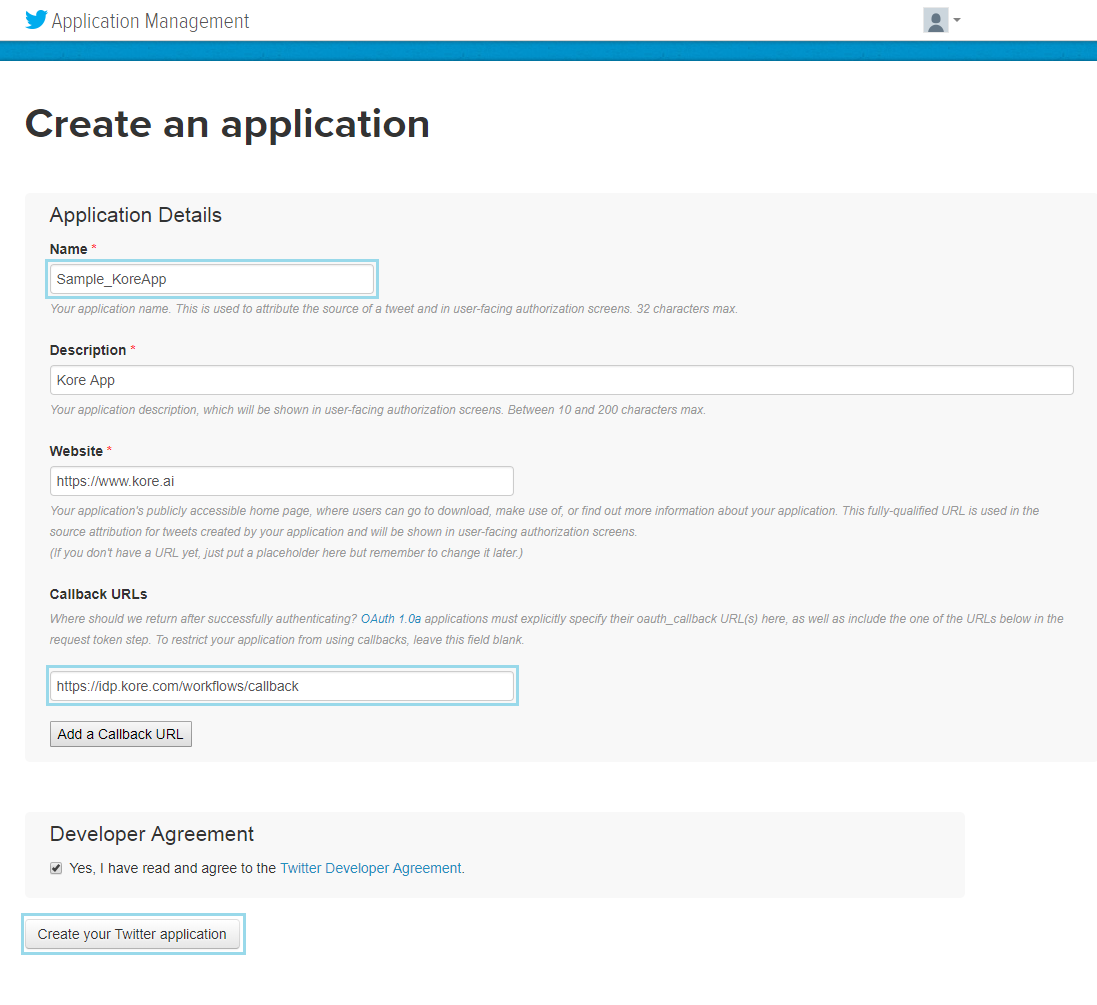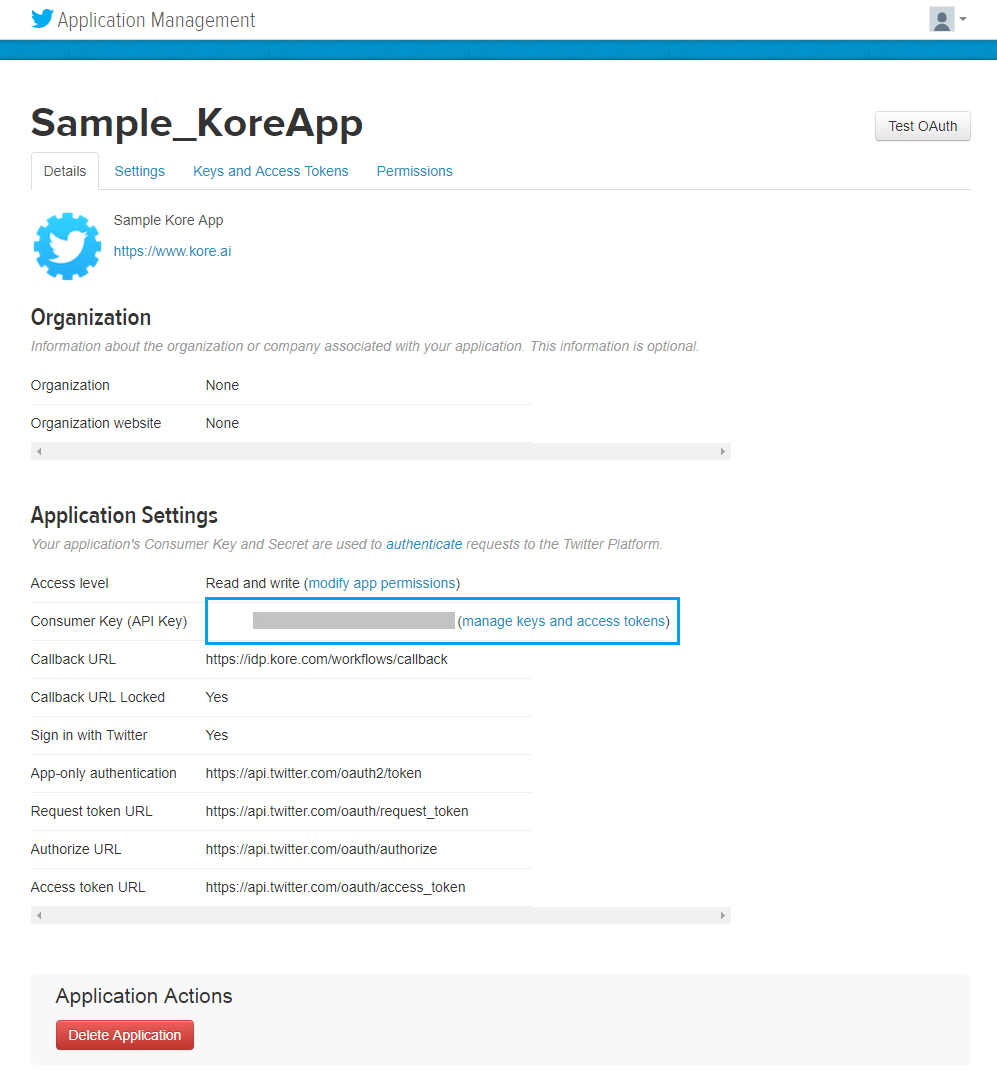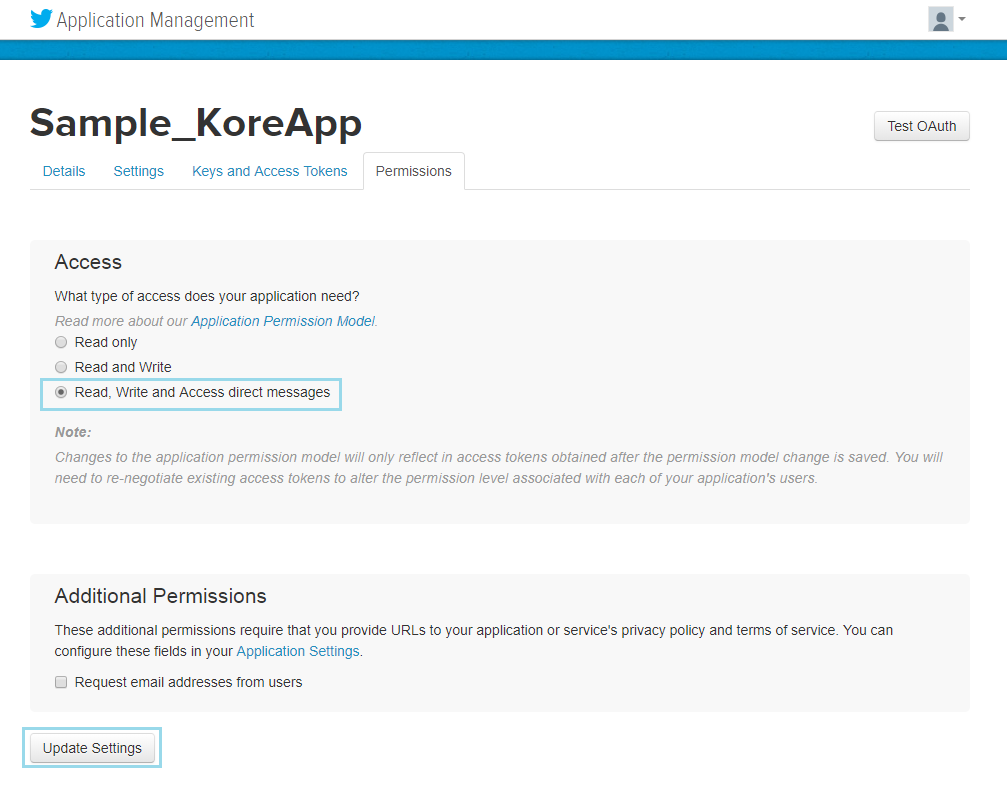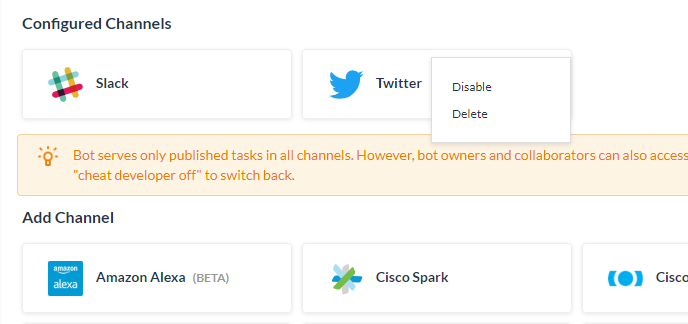To set up Twitter as a channel, you need to associate the bot with a Twitter account, define a Twitter app and enable the integration. To add Twitter as a channel, you need to:
- Create Twitter App– Log on to Twitter and in Twitter App Management Console create an app to provide authorization for communication between Twitter and your Kore.ai Bot.
- Setup Keys and Tokens- Generate the authentication keys and tokens for the Twitter app to communicate with the Kore.ai Bots Platform, and then copy those keys and tokens to Kore.ai Bot Builder.
- Update Permissions -To use Twitter as a channel for your Kore.ai Bot, you must define the Twitter app permissions used to interact with the Kore.ai Bots Platform.
- Enable Channel- After setting up the Twitter app and entering configuration data in Bot Builder, you need to enable the channel.
To add Twitter channel:
To complete this procedure, you must create a Twitter account if you do not have one already.
- In the Bots section of the Bot Builder, click the Bot that you want to add the Twitter channel to.
- On the Channels tab, click the Twitter icon. The Twitter Channel page gets displayed.
- Login to Twitter apps portal and select Create New App. Provide all the required information, use the Callback URL from the Configurations tab of Twitter channel page and click on Create your Twitter application to create your new app. You would be redirected to the Details tab of App Information page.

- From the Application Settings section, click on Manage keys and access tokens link next to the Consumer Key field.

- Scroll down to the end and click on Create my access token. If you have already generated the access token then you may reuse the same. Make note of the values for Consumer Key, Consumer Secret, Access Token, Access Token Secret, and Owner fields and enter them in the Configurations tab of Twitter channel page on the builder.

- Navigate to Permissions tab and select the option Read, Write and Access direct messages under Access section. Click on Update Settings to save the new permissions.

- Navigate to the Configurations tab to review and complete the channel setup.
Editing the Twitter Channel
To edit the Twitter channel, hover your mouse over the channel and click to modify. You can make necessary updates to your channel configurations and save them. You may also disable or delete the channel information by clicking the Settings icon

Select one of the following commands to modify the channel:
- Disable/Enable – Click Disable to temporarily disable use of the Twitter channel for your Bot. To enable use of the Twitter, click Enable.
- Delete – Click Delete, and then click OK in the Delete Confirmation dialog to permanently delete the Bot channel configuration.
Warning: This operation is permanent, and cannot be undone.
